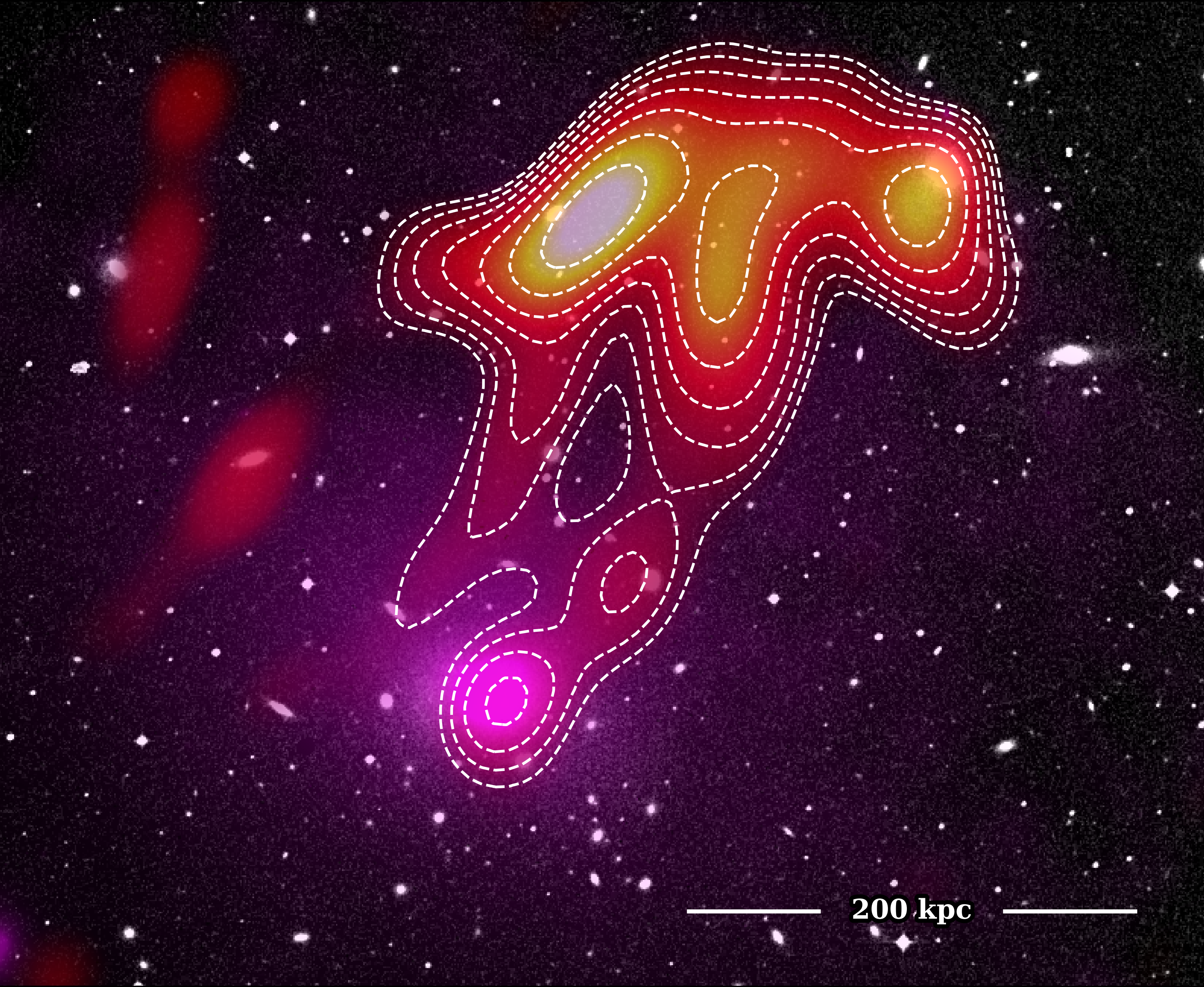An Australian-Italian team has discovered a peculiar cosmic object that resembles a giant jellyfish stretching over 1.2 million light-years through the galaxy cluster A2877. The discovery of this structure was possible thanks the Murchison Widefield Array (MWA) and it is reported in The Astrophysical Journal.
“We looked at the data, and as we turned down the frequency, we saw a ghostly jellyfish-like structure begin to emerge,” lead author Torrance Hodgson from Curtin University said in a statement. “This radio jellyfish holds a world record of sorts. Whilst it’s bright at regular FM radio frequencies, at 200 MHz the emission all but disappears. No other extragalactic emission like this has been observed to disappear anywhere near so rapidly.”
For this reason, the object has been defined as an ultra-steep spectrum (USS) Jellyfish.No relation to the Star Trek starship of the same name. The source of the USS Jellyfish is not clear, but the team believes it is a case of intergalactic gas released a long time ago that is now experiencing a new phenomenon. And that’s what making the material shining anew in radio frequencies. And that’s why they are calling it a radio phoenix!
“We’ve had to undertake some cosmic archaeology to understand the ancient background story of the jellyfish,” Hodgson explained. “Our working theory is that around 2 billion years ago, a handful of supermassive black holes from multiple galaxies spewed out powerful jets of plasma. This plasma faded, went quiet, and lay dormant. Then quite recently, two things happened—the plasma started mixing at the same time as very gentle shock waves passed through the system. This has briefly reignited the plasma, lighting up the jellyfish and its tentacles for us to see.”
When observatories such as the Square Kilometers Array begin their work, many more ultra-steep spectrum objects might come to light.

A composite image of the USS Jellyfish in Abell 2877 showing the optical Digitised Sky Survey (background) with XMM X-ray data (magenta overlay) and MWA 118 MHz radio data (red-yellow overlay). Credit: Torrance Hodgson, ICRAR/Curtin University.